-
The properties of strong interaction matter, such as nuclear systems, are of both experimental and theoretical interest. Its thermodynamic properties are governed by the nuclear equation of state, which is a function of density, temperature, and isospin asymmetry. Asymmetric nuclear matter refers to nuclear systems with different ratios of neutrons to protons. The study on the equation of state of asymmetric nuclear matter is a fundamental and crucial research topic in the fields of nuclear physics and astrophysics, with significant implications on undertsnading nuclear structures, nuclear reactions, and properties of neutron stars [1, 2]. Over the past few decades, extensive research has been conducted to understand the equation of state of asymmetric nuclear matter. However, considerable debate remains, particularly concerning the equation of state of asymmetric nuclear matter, specifically for its isospin dependent component, known as the symmetry energy. Therefore, current research on the equation of state of asymmetric nuclear matter predominantly focuses on the density dependence of the symmetry energy.
Information on the symmetry energy can be obtained from various observables, such as neutron skins, charge radii of mirror-pair nuclei, binding energies of finite nuclei, isospin diffusions and isotopic distributions in heavy-ion collisions, and neutron star properties [3−12]; however, none of them is conclusive by itself thus far. The isovector electric or change-exchange giant resonances are very sensitive to the density dependence of the symmetry energy. Hence, the properties of giant resonances have been used to evaluate the nuclear symmetry energy. Refs. [13−16] revealed that the value of the symmetry energy is strongly correlated with the centroid energy of the isovector giant dipole resonance (IVGDR) in spherical nuclei. The electric dipole polarizabilities have recently been measured in
$ ^{208} {\rm{Pb}}$ ,$ ^{68} {\rm{Ni}}$ ,$ ^{48} {\rm{Ca}}$ , and Sn isotopes, and many studies have attempted to constrain the symmetry energy using electric dipole polarizabilities [17−24]. The isovector giant quadrupole resonance has also been used to obtain information on the symmetry energy [25]. The properties of charge-exchange giant resonances, such as the isobaric analog state, Gamow–Teller, spin-dipole, and anti-analog giant dipole resonances, can be used to constrain the equation of states of asymmetry nuclear matter [26−30]. More details on the symmetry energy and giant resonances as well as their relationship are available in a review paper by Xavier [2]. Pygmy dipole resonance (PDR) appears in the strength distribution of isovector dipole resonances in exotic nuclei [31−33]. The PDR in neutron-rich nucleus is often explained as a vibration in which the excess neutrons oscillate against a proton–neutron saturated core. The PDR has been measured experimentally in$ ^{130,132} {\rm{Sn}}$ ,$ ^{26} {\rm{Ne}}$ , and$ ^{68} {\rm{Ni}}$ [34−36]. The PDR of exotic nuclei has been observed to be highly sensitive to the density dependence of the symmetry energy. Therefore, the measured strength of the PDR can be employed to constrain symmetry energy parameters such as the value of the symmetry energy and its slope parameter at saturation density [37, 38].In Ref. [38], the measured percentages of the energy-weighted sum rule (EWSR) exhausted by the PDRs in
$ ^{68} {\rm{Ni}}$ and$ ^{132} {\rm{Sn}}$ were used to constrain the symmetry energy and its slope parameter at saturation density. The calculations were performed using a representative set of Skyrme effective forces and relativistic meson-exchange effective Lagrangians. In this paper, we investigate again the correlation between the percentage of the EWSR and the slope parameter of the symmetry energy by considering three new features containing more physical information. First, we employ a family of effective Skyrme interactions in the calculations to obtain a more clear correlation between the percentage of the EWSR and the density dependence of the symmetry energy. The interactions are called SAMi-J interactions [39], and they are built by fitting the parameters to some properties of finite nuclei. Additionally, the symmetry energy remains a fixed value (≈22 MeV) at$ \rho\simeq $ 0.1${\rm{fm}} ^{-3} $ as a constraint such that the interactions are characterized by different values of the symmetry energy and slope parameters at saturation density. In the fitting procedure, all isoscalar observables remain unchanged, e.g., the incompressibility coefficient almost equals 245 MeV. Second, some studies suggest that observables from finite nuclei frequently provide more precise constraints on the symmetry energy and its slope parameter at subsaturation density rather than at saturation density [14, 40−42]. Therefore, in this paper, we constrain the density dependence of the symmetry energy not only at saturation density but also at subsaturation density. The pairing correlation might affect the distribution of the PDR in$ ^{68} {\rm{Ni}}$ , which has often been ignored in previous research. Consequently, it may also result in slightly different values of the symmetry energy and its slope parameter. This is discussed in this paper.The remainder of this paper is organized as follows. A brief report on the Skyrme HF and RPA (or HF+BCS and QRPA) methods is presented in Sec. II. In Sec. III, we show the results and discussions. Finally, a summary and some remarks are given in Sec. IV.
-
The standard form of the Skyrme interaction and its energy density functional are given in Ref. [43]. Within the Skyrme HF+BCS approximation, the quasiparticle wave functions and their quasiparticle energies are obtained from the self-consistent equation
$ \left(-{\boldsymbol{\nabla}}\frac{\hbar^{2}}{2m_{b}^{\ast}({\bf{r}})}\cdot{\boldsymbol{\nabla}}+U_{b}({\bf{r}})\right)\varphi_{b}({\bf{r}}) = \varepsilon_{b}\varphi_{b}({\bf{r}}), $

(1) where
$U_{b}({\bf{r}}) = V_{c}^{b}({\bf{r}})+\delta_{b,{\rm proton}}V_{\rm coul}({\bf{r}}) -{\rm i}V_{so}^{b}({\bf{r}})\cdot({\boldsymbol{\nabla}}\times{\boldsymbol{\sigma}})+ V_{\rm pair}^{b}$ ,$ V_{c}^{b}({\bf{r}}) $ is the central potential field for nucleons,$V_{\rm coul}({\bf{r}})$ is the Coulomb potential,$ V_{so}^{b}({\bf{r}}) $ is the spin-orbit potential, and$V_{\rm pair}^{b}$ is the pairing potential. For the Skyrme HF calculations, the pairing potential is blocked.We employ a density-dependent zero range pairing force in our calculations, which is expressed as
$ V_{\rm pair}({\bf{r}}_{1},{\bf{r}}_{2}) = V_{0}\left [1-\eta\left (\frac{\rho({\bf{r}})}{\rho_{0}}\right )\right ]\delta({\bf{r}}_{1}-{\bf{r}}_{2}), $

(2) where
$ \rho({\bf{r}}) $ is the nucleon density,$ \rho_{0} $ is the saturation density of nucleons (with a numerical value of 0.16${\rm{fm}} ^{-3} $ ), and η can take values of 1.0, 0.5, and 0.0, corresponding to surface, mixed, and volume pairing correlations [44, 45], respectively. Because the mixed type pairing interaction has the advantages of surface and volume pairing interactions, we adopt it as the pairing interaction in our calculations. By fitting the experimental neutron pairing gap (1.39 MeV) of$ ^{68} {\rm{Ni}}$ calculated through a five-point formula, we can determine the strength$ V_{0} $ of the pairing force; the values of$ V_{0} $ are –561.8, –563.3, –579.5, –588.7, and –589.3 MeV$ \cdot $ ${\rm{fm}} ^3 $ for SAMi-27 to SAMi-35.The IVGDR states can be obtained from the RPA or quasiparticle RPA [46]. The well-known RPA (QRPA) method in matrix form is given by,
$ \left( \begin{array}{cc} A & B \\ -B^* &- A^* \end{array} \right) \left( \begin{array}{c} X^{\nu} \\ Y^{\nu} \end{array} \right) = E_{\nu} \left( \begin{array}{c} X^{\nu} \\ Y^{\nu} \end{array} \right), $

(3) where
$ E_{\nu} $ is the excitation energy of the$ {\nu}-{\rm{th}} $ excited state, and$ {X}^{\nu} $ and$ {Y}^{\nu} $ are the amplitudes for forward and backward transitions, respectively.The reduced transition matrix strength can be expressed as
$ B(EJ,i\rightarrow f) = \frac{1}{2J_{i}+1}\left|\langle f|\left|\hat{F}_{J}\right||i\rangle\right|^{2}, $

where
$ \hat{F}_{J} $ is the external field transition operator. For the IVGDR, the external field operator is$ \hat{F}_{1u} = \frac{N}{A}\sum\limits_{p = 1}^{Z}r_{p}Y_{1u} -\frac{Z}{A}\sum\limits_{n = 1}^{N}r_{n}Y_{1u}. $

(4) -
First, we employ the Skyrme HF plus RPA methods to compute the ground-state properties, excited states of
$ ^{68} {\rm{Ni}}$ and$ ^{132} {\rm{Sn}}$ , and constraints on the density dependence of the symmetry energy. The effect of pairing on the results is discussed in the last paragraph of this section. The dipole strength distributions of$ ^{68} {\rm{Ni}}$ and$ ^{132} {\rm{Sn}}$ are shown in Fig. 1. The results are calculated using SMAi-J Skyrme interactions. We can observe that the PDRs are located at an energy of approximately 11 MeV for$ ^{68} {\rm{Ni}}$ (9 MeV for$ ^{132} {\rm{Sn}}$ ), whereas the giant dipole resonances are at approximately 16 MeV for$ ^{68} {\rm{Ni}}$ (14 MeV for$ ^{132} {\rm{Sn}}$ ). As shown in the figures, the dipole strength distributions of the two nuclei are very sensitive to the density dependence of the symmetry energy not only for the giant dipole resonances but also for the PDRs. The interaction with a higher symmetry energy imparts a greater response strength and a lower peak energy for giant dipole resonance; this occurs for both strength distributions of$ ^{68} {\rm{Ni}}$ and$ ^{132} {\rm{Sn}}$ . This can be explained as follows: Generally, an inverse correlation exists between the particle-hole configuration energies and their contribution to the giant resonance states in RPA calculations. If the configuration energies decrease (increase), their partial reduced transition amplitudes increase (decrease). The abovementioned properties are frequently used to constrain the equation of state of asymmetric nuclear matter [14, 37, 38, 42].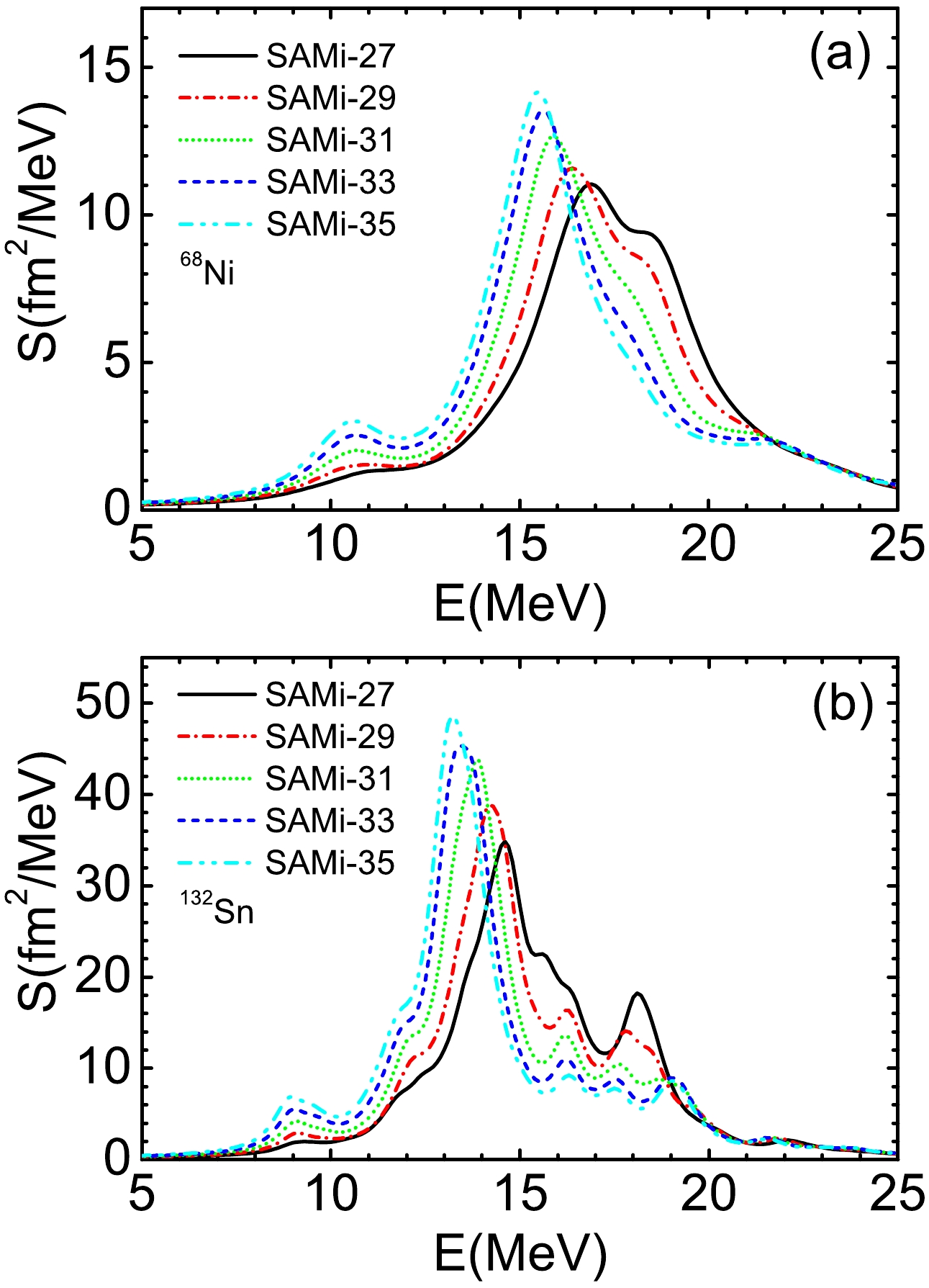
Figure 1. (color online) Dipole strength distributions of
$ ^{68} {\rm{Ni}}$ (a) and$ ^{132} {\rm{Sn}}$ (b) calculated using SAMi-J interactions.In Ref. [38], the properties of the PDRs of
$ ^{68} {\rm{Ni}}$ and$ ^{132} {\rm{Sn}}$ were suggested to obtain the information of the symmetry energy at saturation density. Several representative relativistic and non-relativistic effective interactions were adopted in the calculations. In this paper, we use the pygmy dipole states given by SAMi-J Skyrme interactions to constrain the properties of the symmetry energy. For such interactions, the symmetry energies at$ \rho\simeq $ 0.1${\rm{fm}} ^{-3} $ are kept unchanged. Therefore, they may exhibit different behaviors at densities of 0.11${\rm{fm}} ^{-3} $ and 0.16${\rm{fm}} ^{-3} $ . Additionally, the incompressibility coefficients of these interactions are maintained at 245 MeV. Such characteristics may result in a smaller uncertainty on the constrained results. For the convenience of readers, we show the calculated symmetry energy and its slope parameters at a density of 0.11 (0.16)${\rm{fm}} ^{-3} $ for the SAMi-J Skyrme interactions in Table 1. Experimentally, the percentage of the EWSR exhausted by the PDRs in$ ^{132} {\rm{Sn}}$ was measured at the LAND-FRS facility at GSI, Darmstadt in 2005. The measured percentages of the EWSR for$ ^{132} {\rm{Sn}}$ is 2.6% ± 1.6% [34]. Later, the percentage of the EWSR exhausted by the$ ^{68} {\rm{Ni}}$ PDRs was measured using the RISING setup at the fragment separator of GSI in 2009. The measured percentage of the EWSR for$ ^{68} {\rm{Ni}}$ is 5.0% ± 1.5% [36]. In Fig. 2(a), the percentages of the EWSR exhausted by PDRs in$ ^{68} {\rm{Ni}}$ and$ ^{132} {\rm{Sn}}$ are plotted as a function of the symmetry energy slope parameters at nuclear saturation density. The solid circles (blue) and squares (green) are the results calculated using the SAMi-J Skyrme effective interactions for$ ^{68} {\rm{Ni}}$ and$ ^{132} {\rm{Sn}}$ , and the blue and green lines are the fitted results. We observe that the calculated percentages of the EWSR exhbit a very good linear function of the slope parameters at nuclear saturation density. This means that the percentage of the EWSR is very sensitive to the density dependence of the symmetry energy. The shaded blue and green areas are the experimental results for$ ^{68} {\rm{Ni}}$ and$ ^{132} {\rm{Sn}}$ , respectively. The constrained slope parameter L is in the interval 46.8–97.4 MeV for$ ^{68} {\rm{Ni}}$ and 34.0–93.2 MeV for$ ^{132} {\rm{Sn}}$ . Considering the overlapped area constrained from two nuclei yields the final constraints: slope parameter L at saturation density is in the range of 46.8–93.2 MeV, which overlaps with the value in Ref. [38]. Fig. 2(b) shows the good linear correlation of symmetry energy J and its slope parameter L for the SAMi-J interactions at nuclear saturation density. We can deduce the value of the symmetry energy from the obtained range of slope parameters. J is in the range of 28.5–32.9 MeV, being slightly smaller than the value in Ref. [38], where J is 31.0–33.6 MeV.SAMi-27 SAMi-29 SAMi-31 SAMi-33 SAMi-35 J/MeV 22.9(27.0) 23.2(29.0) 23.4(31.0) 23.9(33.0) 24.4(35.0) L/MeV 34.1(30.0) 44.5(51.6) 55.8(74.4) 66.7(95.4) 77.2(115.0) Table 1. Symmetry energy (J) and its slope parameter (L) at a density of 0.11 (0.16)
${\rm{fm}} ^{-3} $ for the Skyrme interactions used in this paper.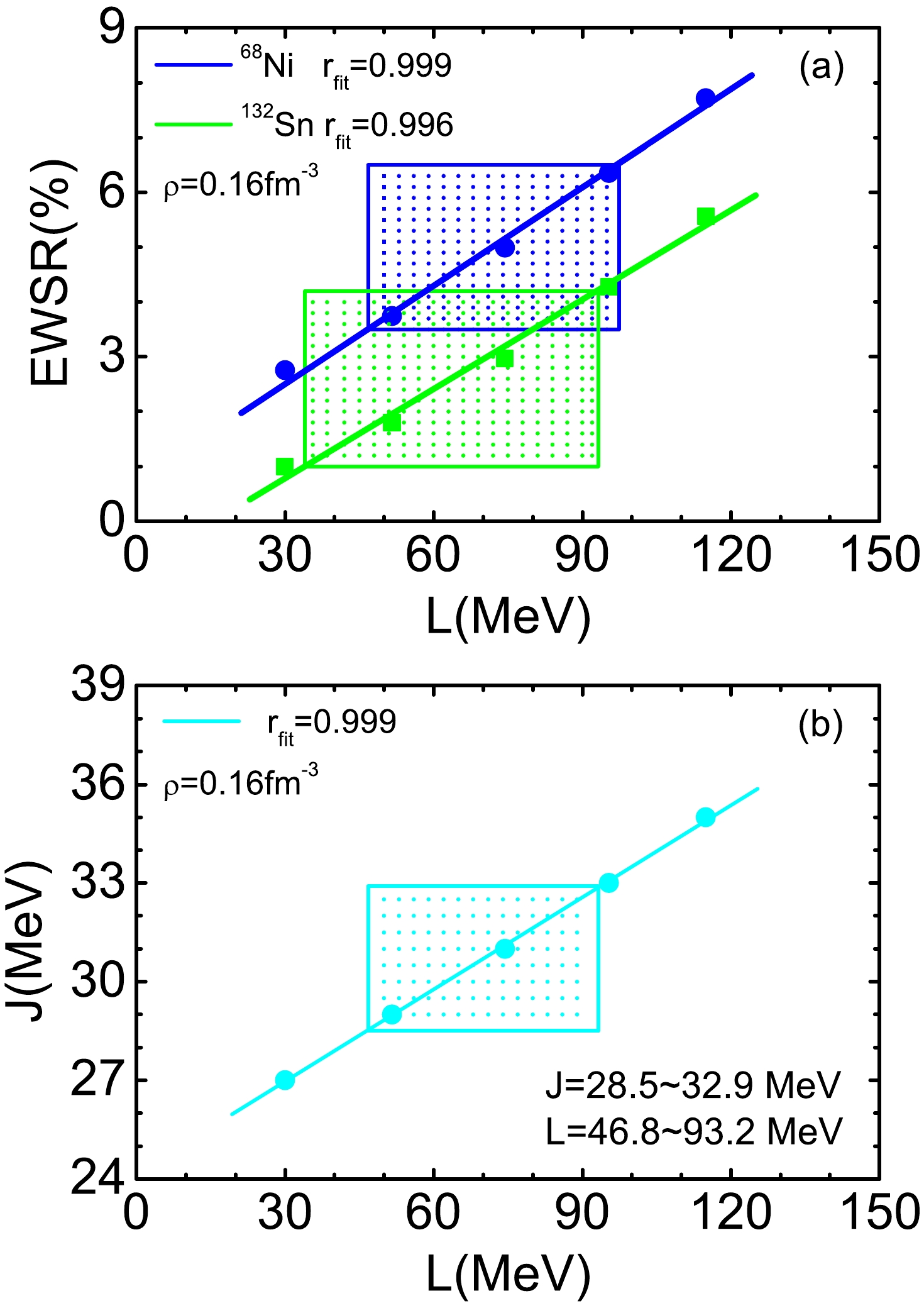
Figure 2. (color online) (a) Percentage of the EWSR exhausted by PDRs in
$ ^{68} {\rm{Ni}}$ and$ ^{132} {\rm{Sn}}$ as a function of symmetry energy slope parameter L at a density of 0.16${\rm{fm}} ^{-3} $ . The solid circles (for$ ^{68} {\rm{Ni}}$ ) and squares (for$ ^{132} {\rm{Sn}}$ ) are the results calculated using the SAMi-J interactions. The straight lines correspond to the results of the fits. The shaded blue and green areas present the experimental data for$ ^{68} {\rm{Ni}}$ and$ ^{132} {\rm{Sn}}$ , respectively. (b) Correlation between symmetry energy J and slope parameter L at a density of 0.16${\rm{fm}} ^{-3} $ obtained using the SAMi-J interactions; the shaded area is the constrained result for the symmetry energy and slope parameter.It is well known that the average density of finite nuclei is less than the saturation density. For example, the average density of
$ ^{208} {\rm{Pb}}$ is approximately 0.11${\rm{fm}} ^{-3} $ . Thus, the properties of heavy nuclei most effectively probe the properties of nuclear matter at approximately 0.11${\rm{fm}} ^{-3} $ rather than at saturation density. Studies have shown that the neutron skin thickness of heavy nuclei is uniquely fixed by symmetry energy slope L($ \rho_c $ ) at a subsaturation cross density of$ \rho_c $ = 0.11${\rm{fm}} ^{-3} $ [41, 42]. In Refs. [47, 48], the monopole resonance energies of heavy nuclei were shown to be well constrained by the equation of states of nuclear matter at$ \rho_c $ = 0.11${\rm{fm}} ^{-3} $ rather than at saturation density. Therefore, this paragraph is devoted to constrain the density dependence of the symmetry energy at a density of$ \rho_c $ = 0.11${\rm{fm}} ^{-3} $ . In Fig. 3, the similar results are presented as in Fig. 2, but the slope parameters and values of the symmetry energy are calculated at$ \rho_c $ = 0.11${\rm{fm}} ^{-3} $ . Fig. 3(a) shows that the calculated percentages of the EWSR also exhibit a very good linear function of the slope parameters calculated at 0.11${\rm{fm}} ^{-3} $ . This indicates that the percentage of the EWSR is also very sensitive to the density dependence of the symmetry energy at 0.11${\rm{fm}} ^{-3} $ . Together with the experimental data, constrained slope parameter L is in the interval 41.6–67.8 MeV for$ ^{68} {\rm{Ni}}$ and 35.8–66.2 MeV for$ ^{132} {\rm{Sn}}$ . From the overlapped area, we observe that slope parameter L($ \rho_c $ ) at 0.11${\rm{fm}} ^{-3} $ is in the range of 41.6–66.2 MeV. Fig. 3(b) shows the good linear correlation of symmetry energy J($ \rho_c $ ) and its slope parameter L($ \rho_c $ ) calculated for the SAMi-J interactions at nuclear subsaturation density. We can deduce that the value of the symmetry energy from the obtained range of the slope parameter is in the range of 23.1–23.9 MeV.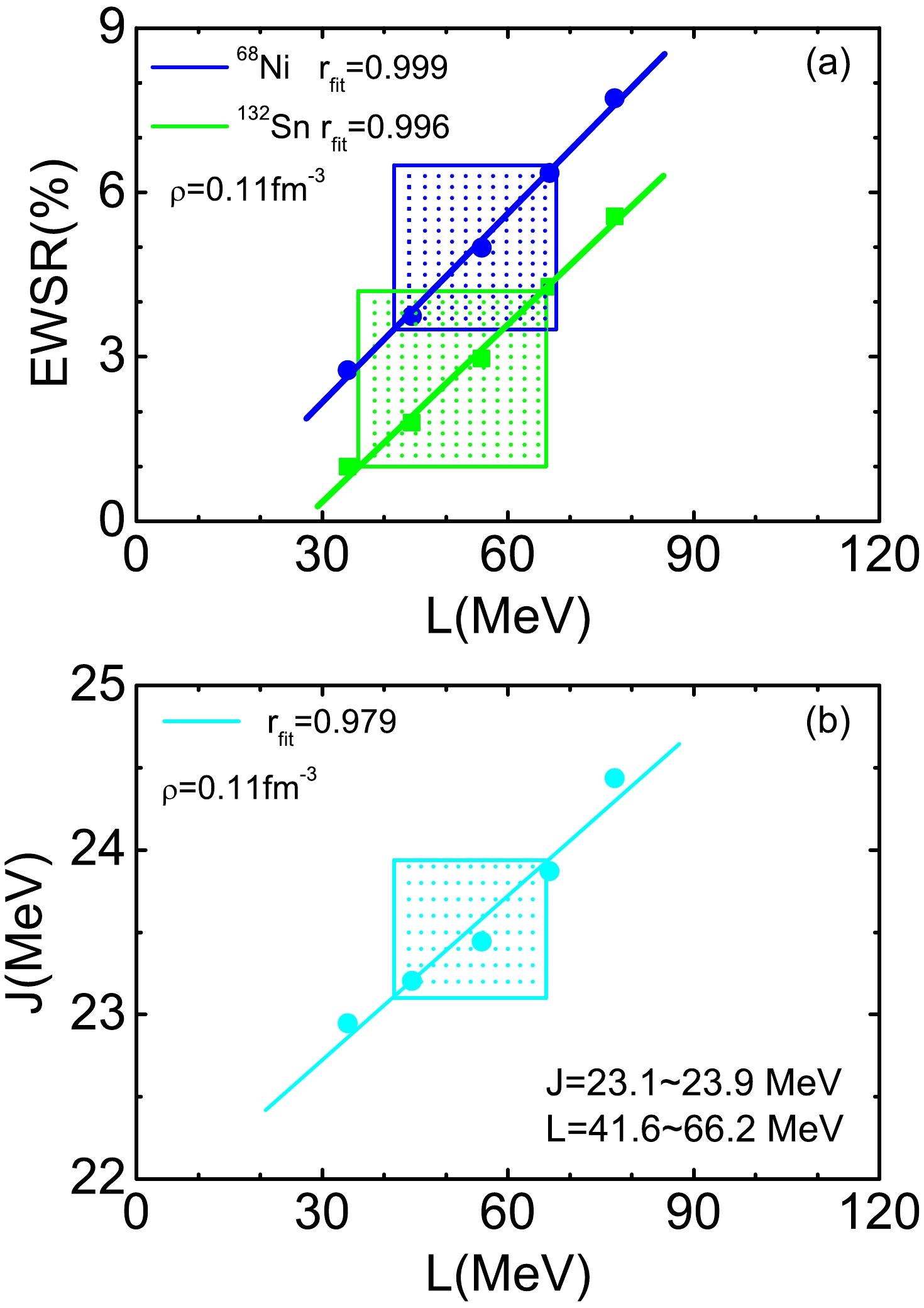
Figure 3. (color online) Same as in Fig. 2but at a density of 0.11
${\rm{fm}} ^{-3} $ .The effect of pairing correlation on the strength distribution of
$ ^{68} {\rm{Ni}}$ has been ignored in previous studies; here, we discuss the effect of the pairing correlation on the results of$ ^{68} {\rm{Ni}}$ . It yields some changes in the final results of the density dependence of the symmetry energy. As discussed in Refs. [49, 50], the pairing correlation enhances the low energy dipole strength in neutron-rich nucleus$ ^{22} {\rm{O}}$ in relation to the results of no pairing calculations. For$ ^{68} {\rm{Ni}}$ , we obtain similar results for pygmy dipole states. The pygmy dipole strength is slightly enhanced by including pairing correlations for all SAMi-J interactions. The calculated percentages of the EWSR for each interaction are slightly larger that the values of no pairing. These features are depicted in Fig. 4. Fig. 4(a) and (b) show the results at densities 0.11${\rm{fm}} ^{-3} $ and 0.16${\rm{fm}} ^{-3} $ , respectively. The blue (green) symbols and lines have the same meaning as those in Fig. 2 and Fig. 3, and the red symbols and lines are the results when pairing is considered. Together with the results given by considering pairing, we observe that the extracted slope parameter shifts down slightly. The value is between 39.3 and 64.1 MeV (41.8−90.2 MeV) at a density of 0.11 (0.16)${\rm{fm}} ^{-3} $ . The corresponding symmetry energy is 23.0−23.8 MeV (28.0−32.5 MeV) at a density of 0.11 (0.16)${\rm{fm}} ^{-3} $ . -
This study comprehensively investigates the density dependence of the symmetry energy using the properties of the pygmy dipoles of neutron-rich nuclei
$ ^{68} {\rm{Ni}}$ and$ ^{132} {\rm{Sn}}$ . We utilize the Skyrme-HF (or HF+BCS) and RPA (or QRPA) methods to calculate the ground-state and excited state properties with SAMi-J Skyrme interactions. The strength distributions indicate that the PDR in the response function is highly sensitive to the density dependence of symmetry energy. It provides the chance to constrain the density dependence behavior. Additionally, we discuss the effect of the pairing correlation on the results. By comparing the measured and calculated percentages of the EWSR associated with the PDRs in$ ^{68} {\rm{Ni}}$ and$ ^{132} {\rm{Sn}}$ , we constrain the ranges of symmetry energy parameter L and symmetry energy J at saturation and subsaturation densities. Deduced slope parameter L and symmetry energy J at saturation density are 41.8−90.2 MeV and 28.0−32.5 MeV, respectively, which are consistent with the currently accepted limits (L = [30.6,86.8] MeV, J = [28.5, 34.9] MeV) [51]. Slope parameter L($ \rho_c $ ) and symmetry energy J($ \rho_c $ ) at subsaturation density are 39.3−64.1 MeV and 23.0−23.8 MeV, respectively. Slope parameter L($ \rho_c $ ) obtained in this study is consistent with the data from nuclear mass differences (L($ \rho_c $ ) = 49.6± 6.2 MeV) [8] and the data from electric dipole polarizability in$ ^{208} {\rm{Pb}}$ (L($ \rho_c $ ) = 47.3± 7.8 MeV) [42]. Symmetry energy J($ \rho_c $ ) at subsaturation density obtained in this study is slightly lower than the data in Refs. [8, 42], which reported J($ \rho_c $ )$ \approx $ 26.0 MeV.
Constraining symmetry energy from pygmy dipole resonances in 68Ni and 132Sn
- Received Date: 2024-09-13
- Available Online: 2025-02-15
Abstract: We conduct a new investigation of the correlation at saturation (subsaturation) density between the density dependence of symmetry energy and the percentage of the energy-weighted sum rule (EWSR) exhausted by pygmy dipole resonances (PDR) in 68Ni and 132Sn. The calculations are performed within the Skyrme HF (or HF+BCS) plus random phase approximation (RPA) (or quasiparticle RPA) problem using SAMi-J effective interactions. The effect of pairing on the dipole strength distribution of 68Ni and density dependence of the symmetry energy is discussed. Slope parameter L and symmetry energy J at saturation (subsaturation) density are 41.8−90.2 MeV (39.3−64.1 MeV) and 28.0−32.5 MeV (23.0−23.8 MeV), respectively. They are consistent with the currently accepted values except for J at subsaturation density, which is slightly lower than the values obtained from nuclear mass difference measurements and electric dipole polarizability data.





 Abstract
Abstract HTML
HTML Reference
Reference Related
Related PDF
PDF
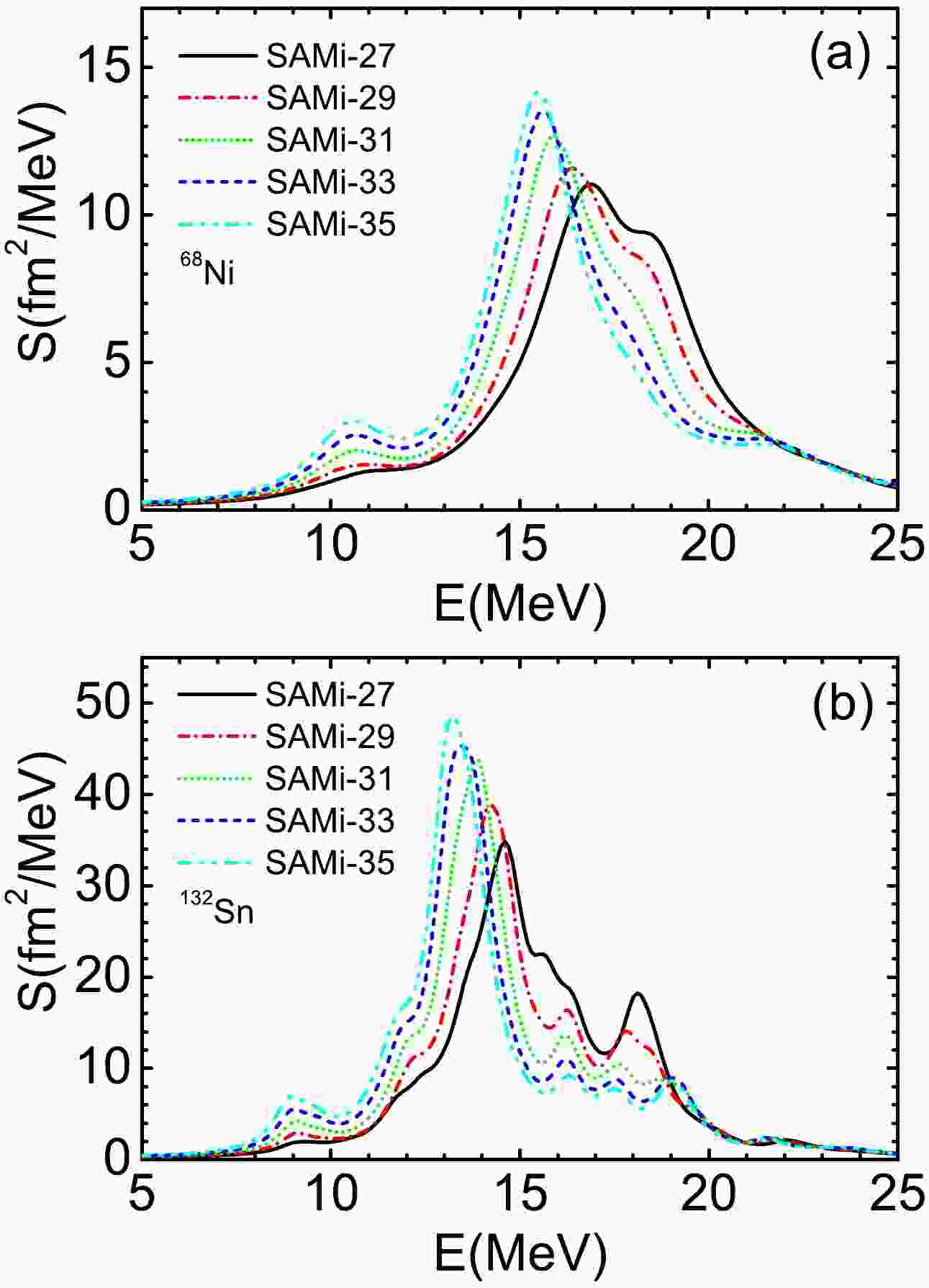










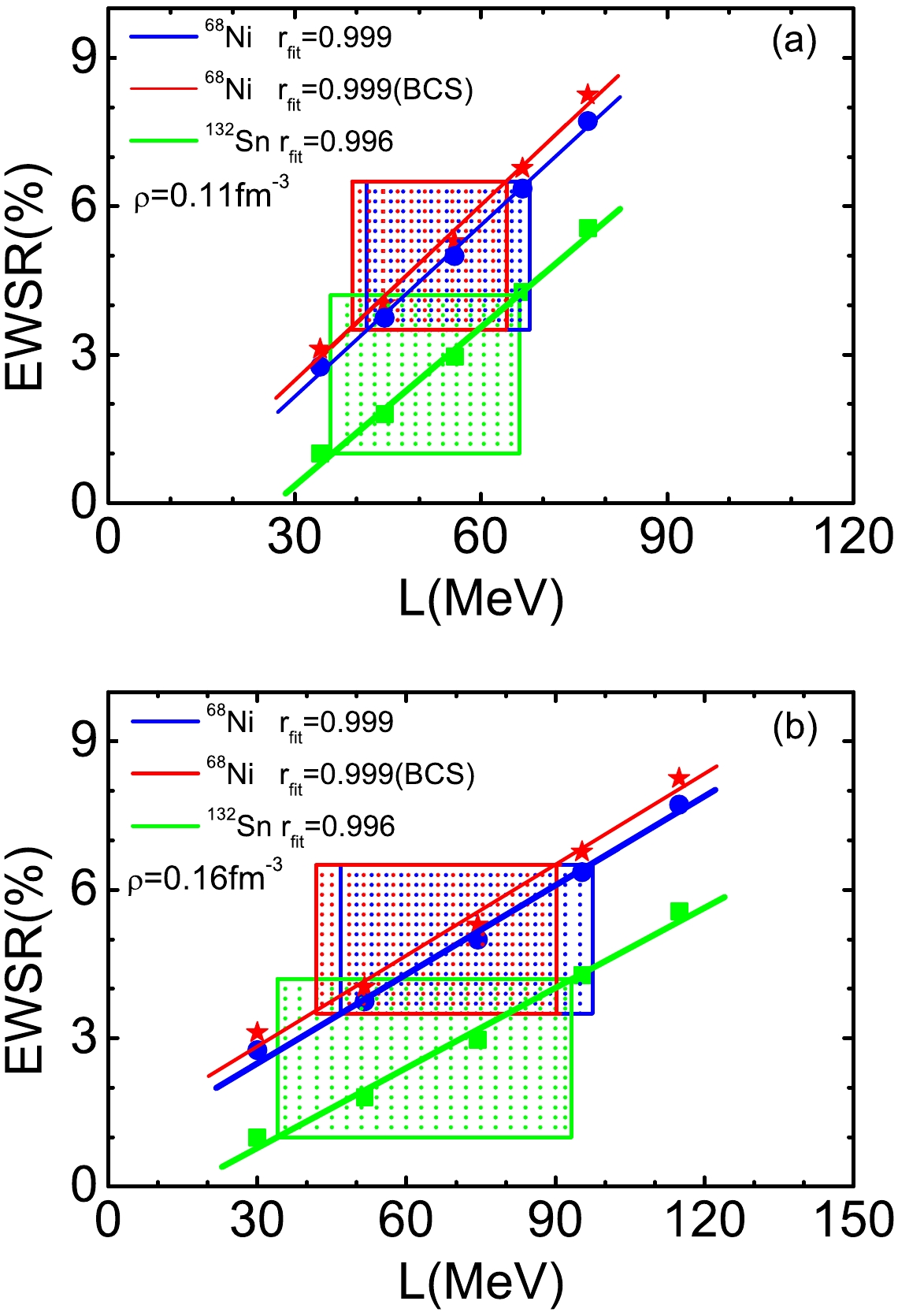



 DownLoad:
DownLoad: